More recently, poinsettia began to appear in our flower shops during the winter holidays. It blooms so brightly and on time in the winter period that it could not help becoming a part of the Christmas decor, which is why the flower received an additional name - the Christmas or Bethlehem star. The prevalence of this flower is associated not only with the fact that poinsettia red is very beautiful, but also with the fact that caring for it at home does not require special skills and efforts.
Content
Grade characteristics
Poinsettia or the most beautiful euphorbia belongs to the genus Euphorbia of the family Euphorbiaceae. This is an evergreen bush, at home reaching a height of 30-50 cm, although at home its standard size is 1.5 m, and giants are also 4 meters. The compact size was developed by scientists for the convenience of transportation and breeding in any room that does not require large dimensions.
The leaves are pointed ellipsoid, their length is 10-15 cm, the color is dark green.
Flowers are inconspicuous, small, yellow. But they are framed by luxurious bright red bracts, and most call them flowers. Breeders bred varieties with yellow, white, pink, cream and two-tone bracts.
All Euphorbiaceae plants have juice in the form of milk in their stems, which is liquid latex by nature and saves the plant in a shallow climate from thirst.
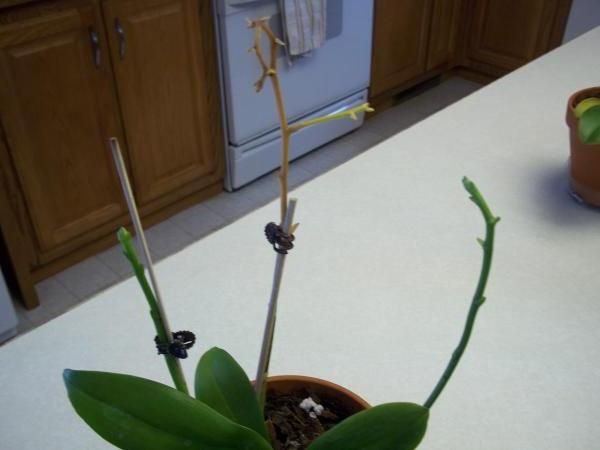 You may be interested in:
You may be interested in:Secrets and difficulties of caring for a flower at home
Poinsettia is often grown as a one-time decor, which is discarded after flowering. Therefore, it is believed that she herself does not continue to live, but perishes. But this is not so, and if you try, you can achieve repeated flowering.
Temperature mode
The southern homeland has accustomed euphorbia to heat: the air will be optimal at 18-20 degrees, but it will also withstand 25. But drafts and cooling are unacceptable, the plant responds to them by dropping leaves.
During dormancy - at the end of winter - the flower needs to lower the air temperature to 14 degrees. After 1-2 months, heat will be needed again. Such a change in temperature conditions will allow the plant to bloom again.
Shine
Poinsettia loves sunny windowsills, but in summer it needs to be hidden from direct rays. And most importantly, after flowering has ended, you need to completely remove it from the light for a month or two in order to organize a dormant period and “charge” the plant for the new season and repeated flowering. After this period, return the pot to the window.
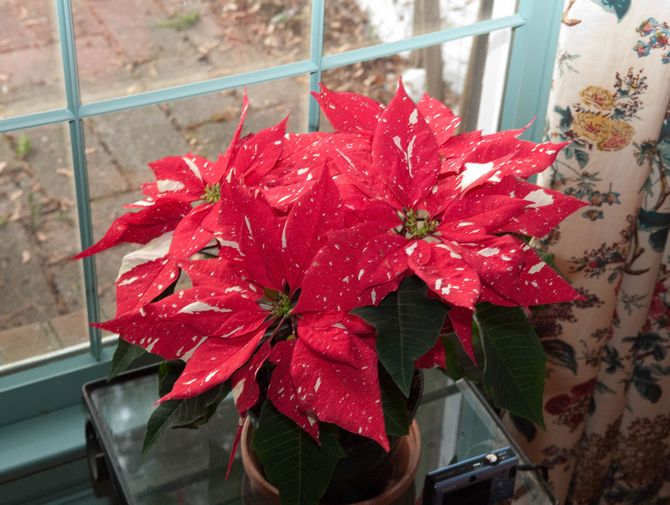
The fact is that for the December bloom, poinsettia must see a short daylight, and they create it artificially: they hide the pot in the closet for 12 hours or cover it with an opaque bag. The second 12 hours it should be in the light. You will need to stop these actions after the buds appear on the plant.
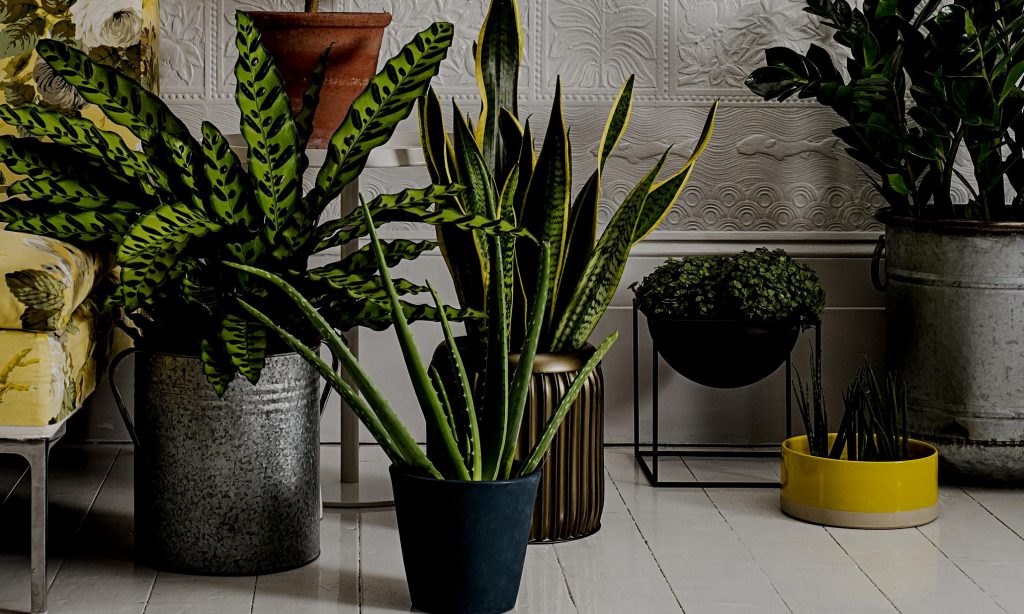 You may be interested in:
You may be interested in:Watering and feeding
The earthen lump should dry slightly on top, and immediately you need to water the plant.At the same time, it is vigilant to ensure that no water remains in the pan, this balance of a sufficient amount of water is very important.
It is necessary to feed the plant during the period of active flowering quite often - once every two weeks. For this, experts recommend the use of fertilizers containing potassium. Fertilizers based on vermicompost will also have a beneficial effect.
How to propagate and transplant a flower at home
Propagation of poinsettia is not very easy, most often it is possible in specialized farms, where it is grown massively for sale. But of course, amateur gardeners do not give up, and the tenacity of many is rewarded with success.
Cuttings for propagation are taken in spring from young shoots, when there will be at least 4 buds with internodes. Fragments of 10 cm are cut. Milky juice stands out at the site of the slice, which interferes with rooting, closes the vessels, so the stalk must be placed in warm water for 15 minutes with the addition of a rooting agent.
Sometimes they use a method in which cuttings stand in such a solution for several days - until the roots are formed. In both cases, then they are transplanted into a substrate: peat plus sand, or even into finished peat tablets. Cuttings in the ground should be covered with a bag, create a mini-greenhouse, keep it in heat, humidity and sufficient light, open periodically for ventilation.
In a month, the plants will develop a root system sufficient for transplanting into a pot, and then they are looked after, like adult flowers. Pinching to form a beautiful bush is required during the entire growth period.
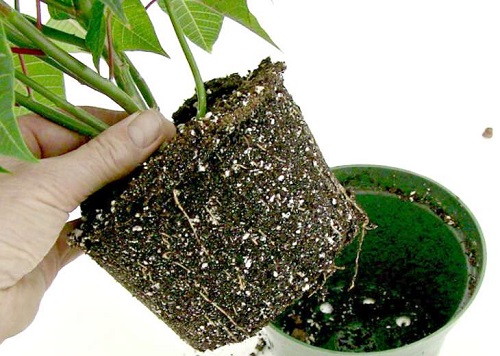
It is important to remember that this plant is not the easiest to root, therefore, each stage must be approached with maximum efficiency: choose the strongest uterine plant, carefully monitor water, light and air temperature, do not miss the ventilation and the development of mold that can destroy the seedling .
It is necessary to transplant adult poinsettia after the end of the dormant period, in the spring, when it begins to grow actively. A larger pot is needed and it is imperative to replace the soil so that it has enough power. You can not shake off the ground completely so as not to damage the roots, put the plant in a new pot and pour the nutrient mixture on the sides, slightly tamping.
The composition of the mixture needs light: turf land, peat, sand, agroperlite. These ingredients will adequately retain moisture and allow excess to pass through the drain hole on the pallet.
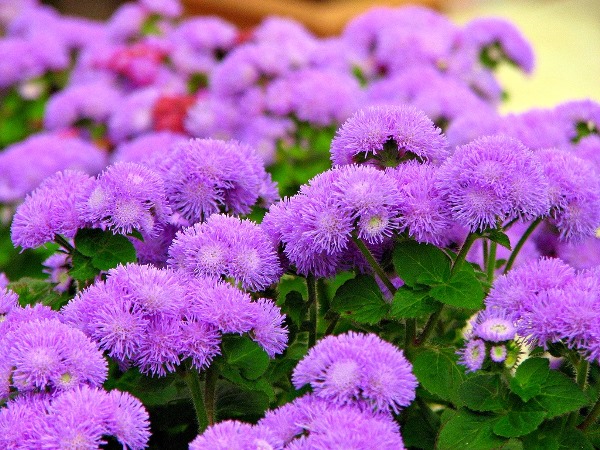 You may be interested in:
You may be interested in:Diseases and Pests
Rare plants are not affected by diseases and harmful insects. Poinsettia diseases are mainly associated with improper growing conditions. For example, excessive humidity leads to fungi:
- Fusarium eats the stems. First they turn brown, then they rot.
- Powdery mildew covers white leaves and flowers and gradually destroys them.
- Gray rot overtakes a plant living in a humid room. All parts of the plant are covered with a gray coating of mold, the leaves turn brown.
Pests can also infect poinsettia:
- Whitefly is a small white midge that sucks out juices and takes vitality from a plant.Its presence is visible not only from insect flying, but also from white spots on the inside of the leaves. The plant must be treated with insecticides.
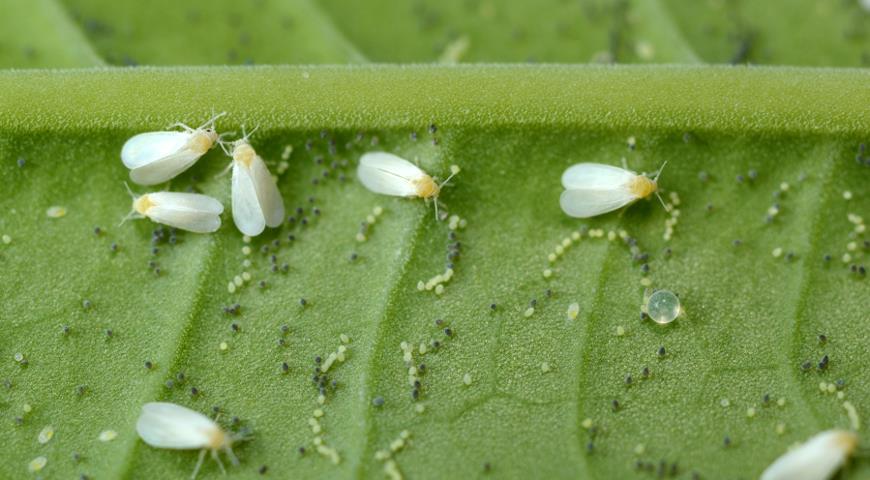
Whitefly - Aphid - causes yellowing and falling of leaves. It’s unlikely to be able to collect insects just like that. Most likely, you will have to remove all the affected fragments, and treat the plant with a product that contains permethrin.
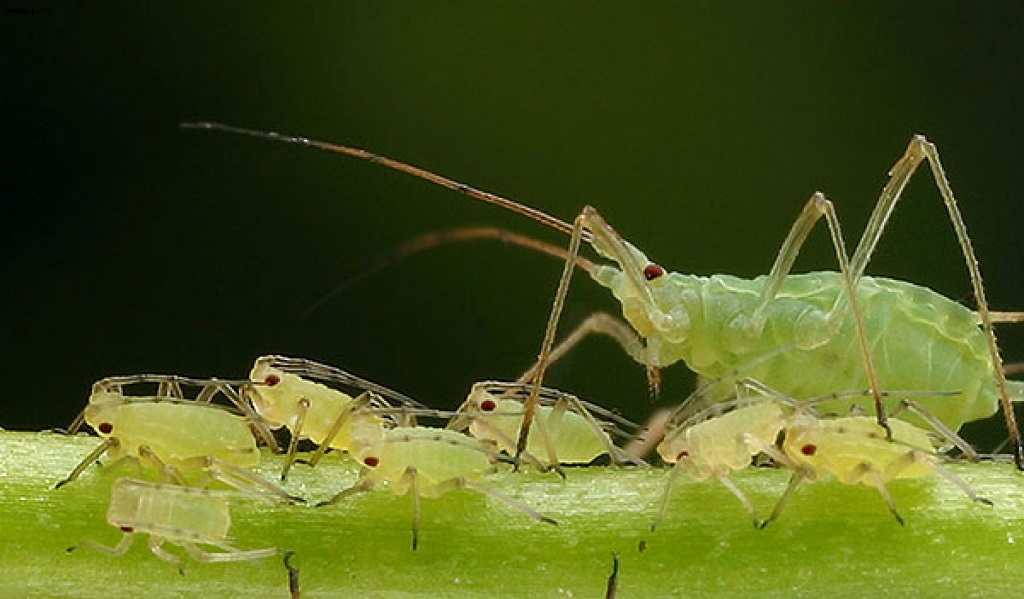
Aphid - Mealybug - an insidious insect that stops the growth of poinsettia. You can get rid of it by completely replacing the soil and treating the pot and plant with an insecticide.
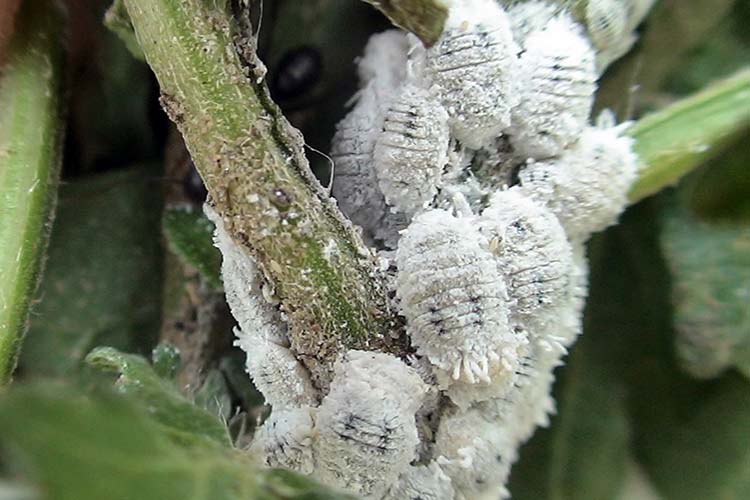
Mealybug
For any damage to the flower, it must be isolated from others, such a quarantine will not allow the problem to spread to the entire home flower family.
History of flower growing and signs
The native land of the plant is the Mexican tropics and Central America, where it grows up to 4 m. The Aztecs - the indigenous inhabitants of Mexico - used the plant to produce paints, medicines, but primarily in religious rituals. For them, poinsettia was a symbol of purity, immortality. They believed that the soldiers who died in battle then came to earth precisely for the sake of this flower. There is still a belief about a goddess with a heart broken from love, drops of blood from which turned into flowers.
This plant came to Christianity. There is a legend about a poor child who wanted to give a gift to Christ. He gathered a bouquet of simple flowers by the road, believing that such a gift is also valuable, since it is made from the heart. And as soon as the baby brought it, the bouquet shone a bright red color, like holiday lights. So poinsettia was born and became a symbol of Christmas. It is decorated with temples for the holiday, used in symbolism.
And she got the name on behalf of the first American Minister of Mexico, Joel Roberts Poynsett, for whom botany was a great hobby, and euphorbia caused admiration and delight.
He took cuttings from the found plant, grew and gave away to friends and botanical gardens, thereby introducing poinsettia to the rank of a home flower around the world. There is even a celebration of this flower - December 12, this is the day when the minister passed away and it was proposed to name the plant by his name as a sign of great gratitude.
What is noteworthy, the flower has many folk names. "Bent El Consul" - the Egyptian version, also associated with Poinsent, the former consul there, translates as "daughter of the consul." "Ataturk Flower" pleases people in Turkey, perpetuating the founder of their state. In American countries, such names sound: “The Night Before Christmas,” “The Crown of the Andes,” “Easter Flower,” “Christmas Eve.”
The botanical name Euphorbia pulcherrima was given in Europe by the botanist Alexander von Humboldt, who brought it from America, described and entered it in the botanical registry. The secret of growing became known to a wide range of gardeners not so long ago: in the 90s of the 20th century.
Until that time, the monopoly belonged to the Ekka family of California, who ranked second in the flower business after the Dutch tulips. And only recently, scientists have learned all the tricks of reproduction, making it possible for everyone to grow a flower.
How can a flower be dangerous to humans?
The belonging of the flower to the Euphorbia species testifies to the toxicity. Plant juice is caustic, it causes irritation of the skin and mucous membranes, provokes allergic reactions. Dermatitis threatens people with sensitive skin, juice can cause serious lesions.
There is also an opinion that poinsettia can be poisoned if it enters the esophagus. But, fortunately, this is not so, for poisoning, a person or a pet would have to eat at least 500 leaves. Although eating them even in small quantities is still not worth it so that digestive upset does not happen.
The juice contains cyanogenic compounds, euphorbic acid, euphorbin, in bright bracts there are especially many anthocyanins that give such a pigment.
For safety, flower care is best done with gloves or washing your hands after contact. Then the plant will be completely safe for the owner. If there are small children in the house, whether animals, then put the flower outside their reach.
Common questions
- aphids - sucking out juices, deprives a leaf of chlorophyll and vitality. Such leaves need to be removed and the entire plant treated from pests;
- dry indoor air is a good environment for a spider mite, whose activity leads to yellowness and death of leaves;
- A cold and waterlogged room also causes yellowing due to rotting of the roots. You can remove the problem by changing the conditions for care or treatment with the right drug.
This situation suggests that most do not know what to do after the poinsettia fades, they consider it a one-time decor, like a Christmas tree. The plant can be safely kept in the house all year and get repeated flowering (perhaps not so lush) by next Christmas, if you listen to the advice of specialists.
It is wonderful that now the Christmas Star flower is not shrouded in secret monopoly cultivation, but is accessible to everyone thanks to the experience of science. You can enjoy watching him during the holidays and give him a second life in the next season.

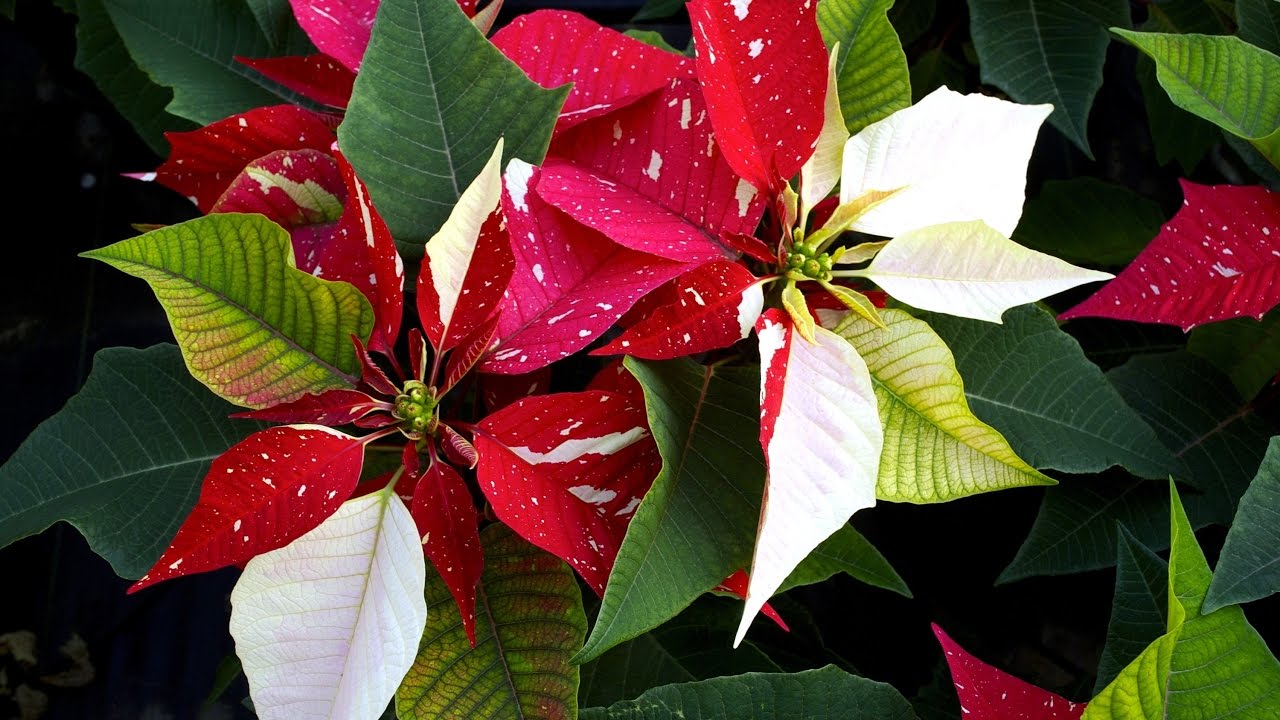
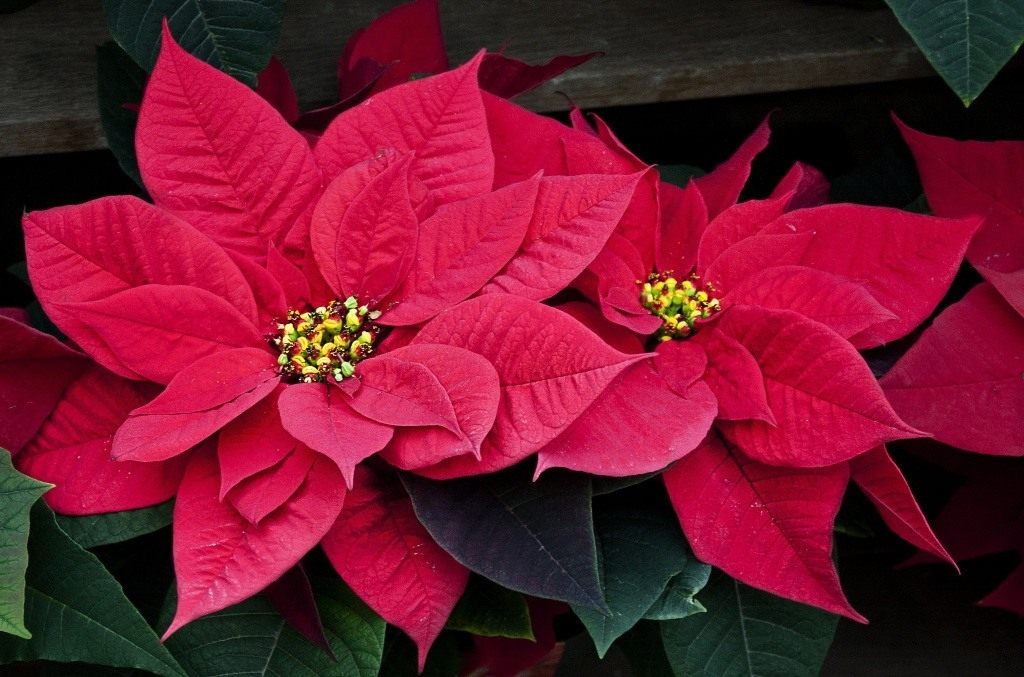

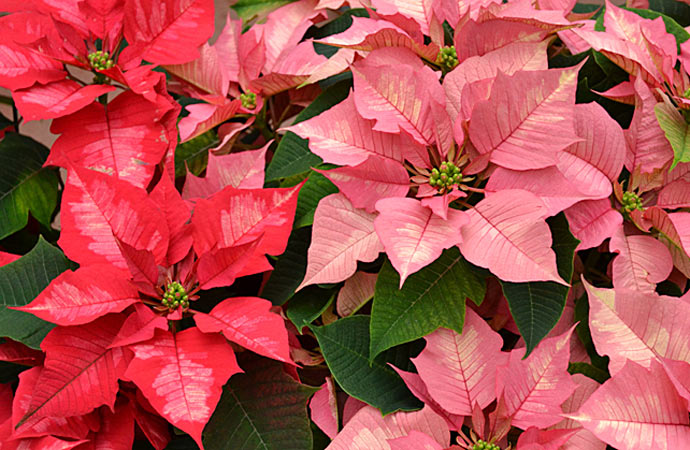
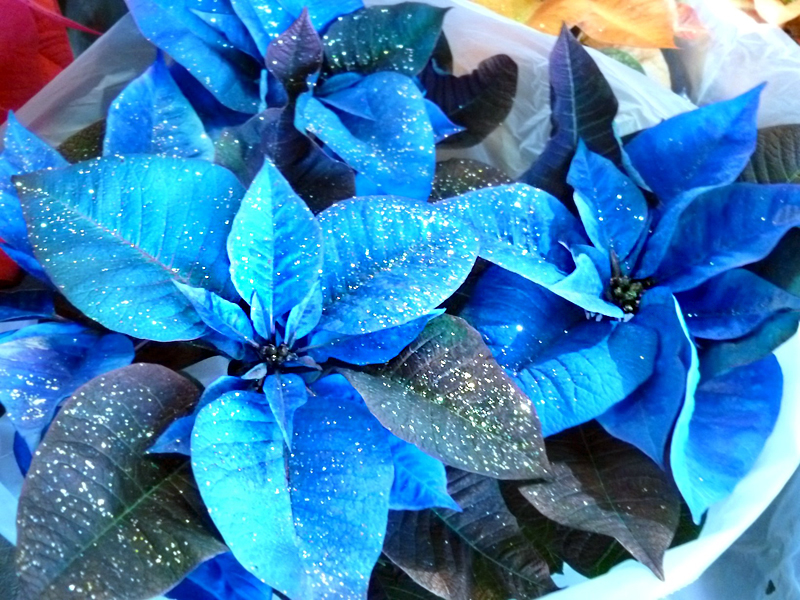

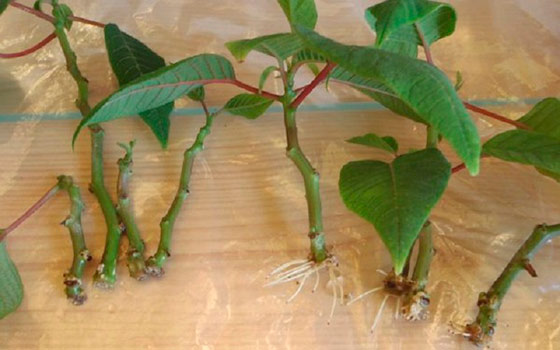
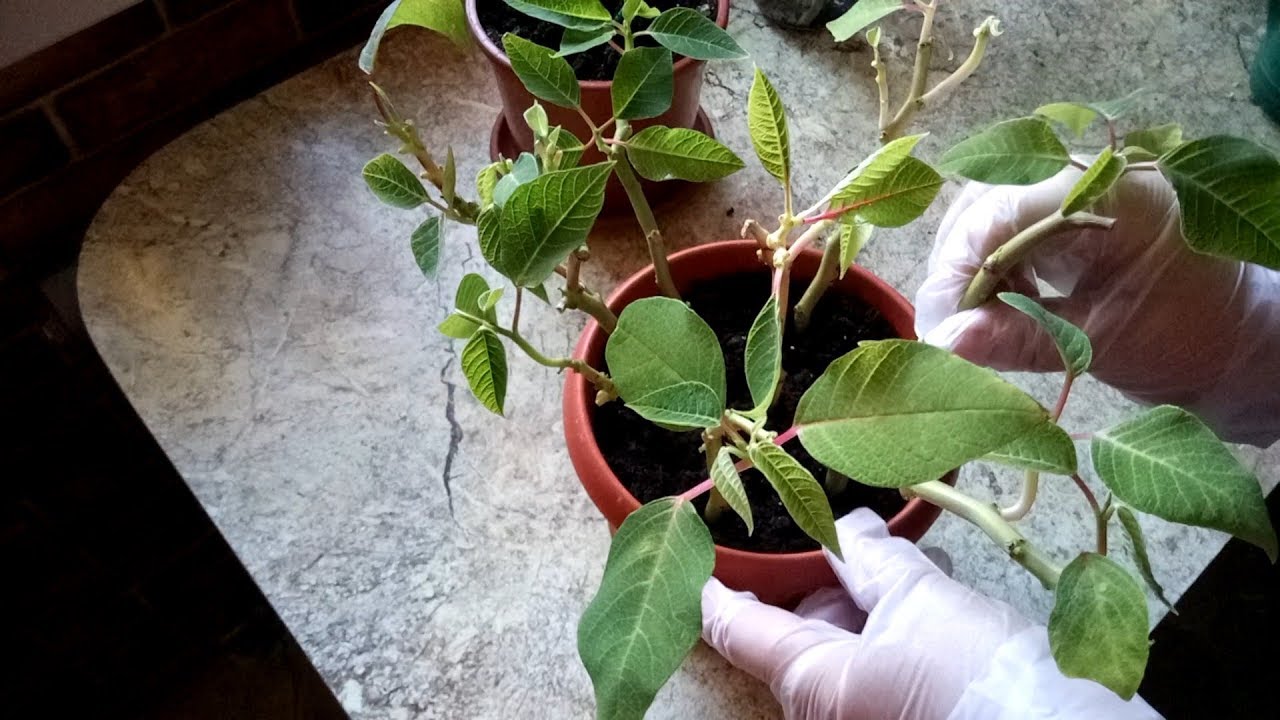



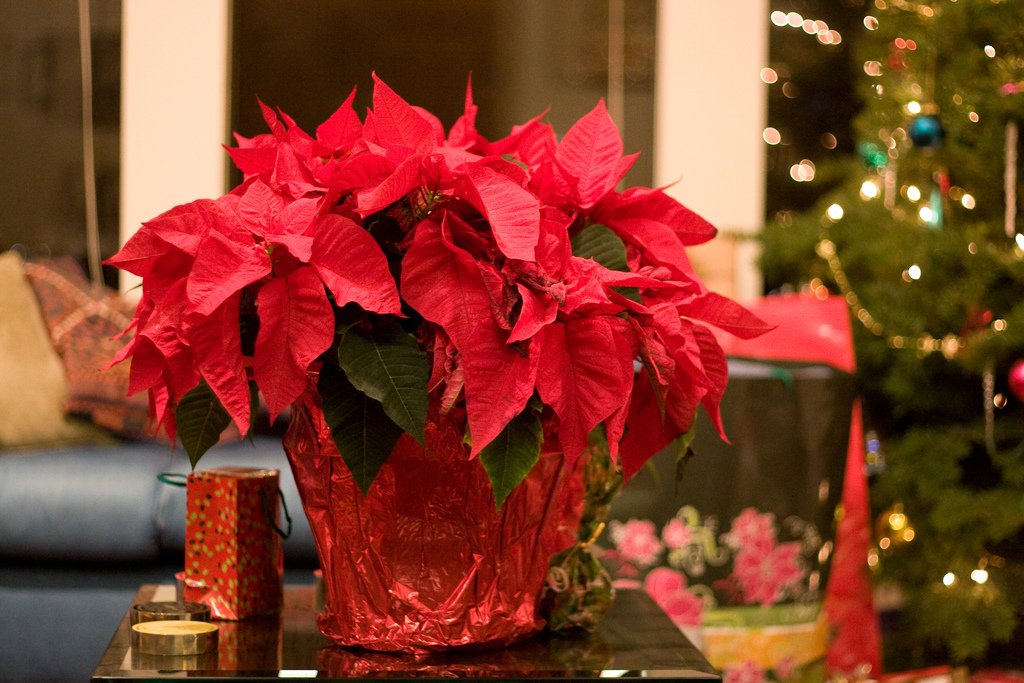
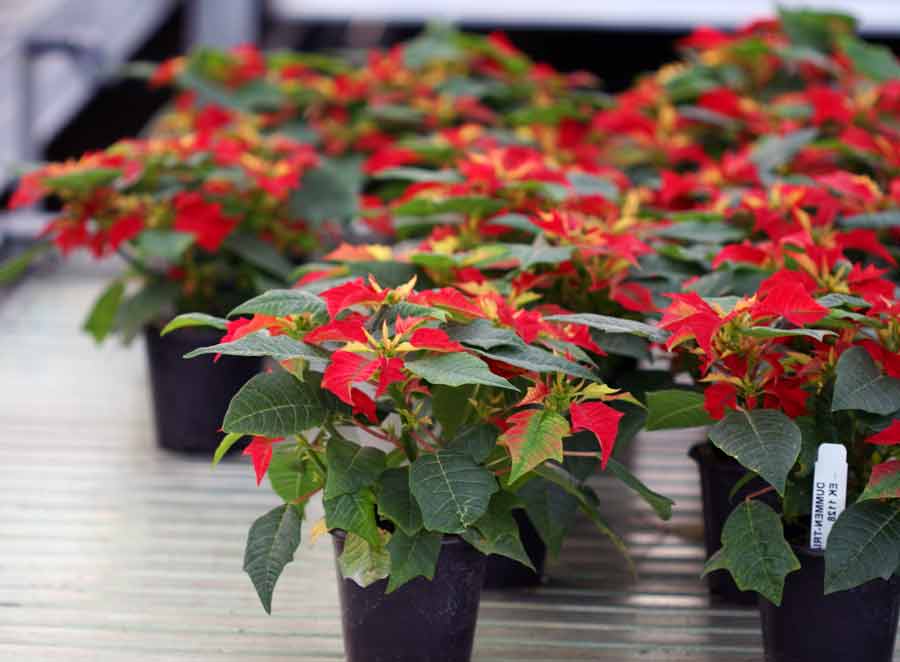
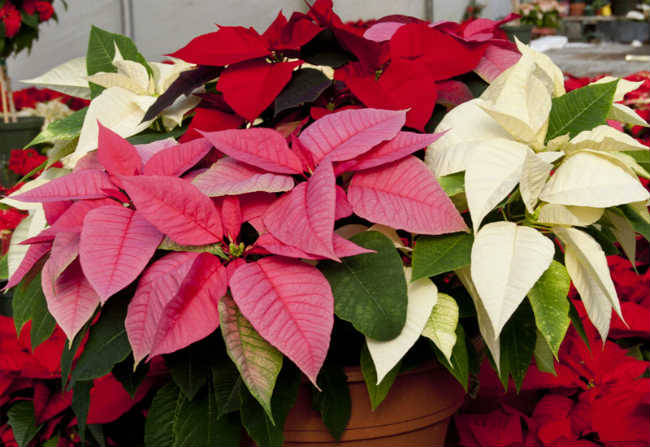
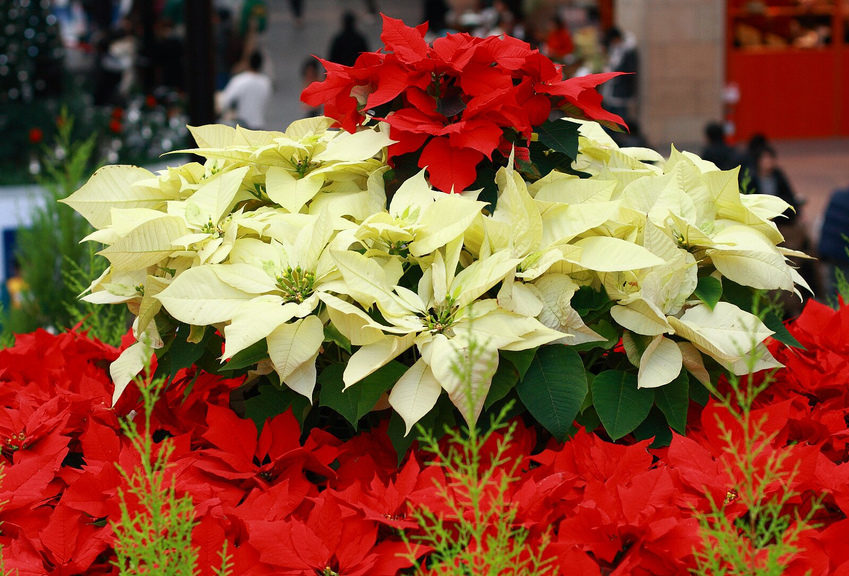
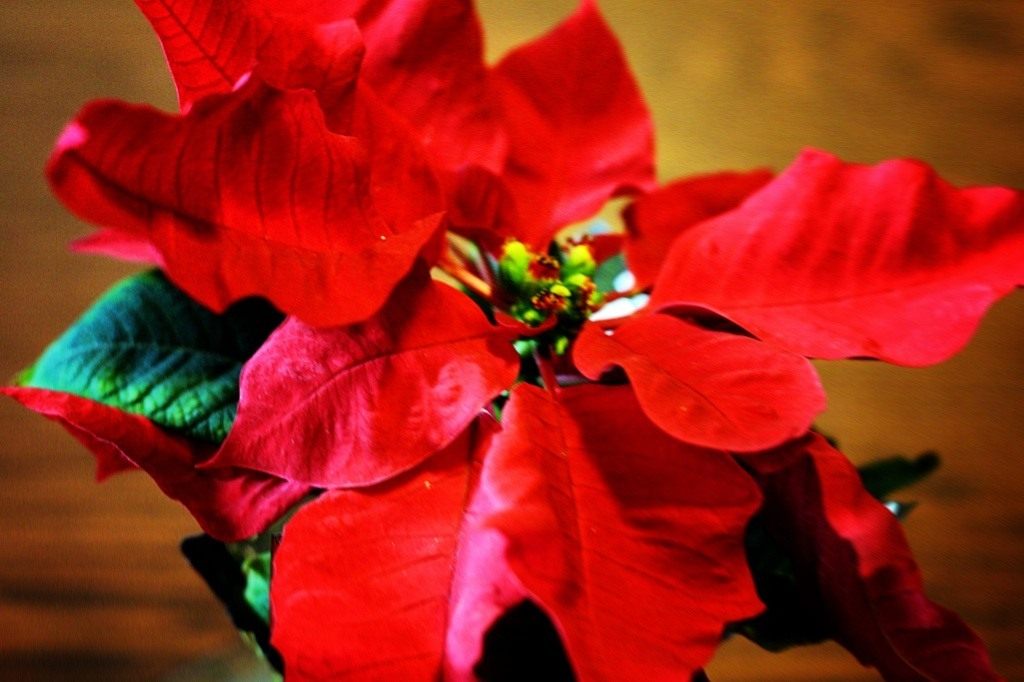

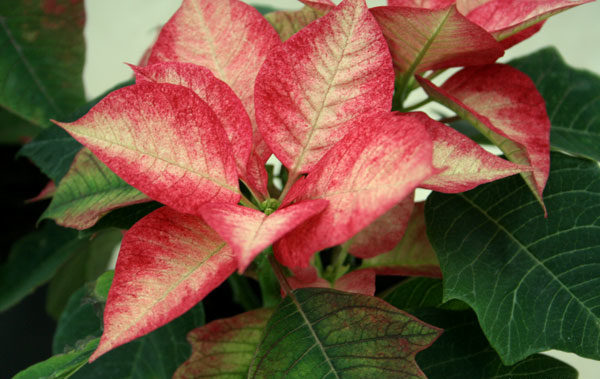
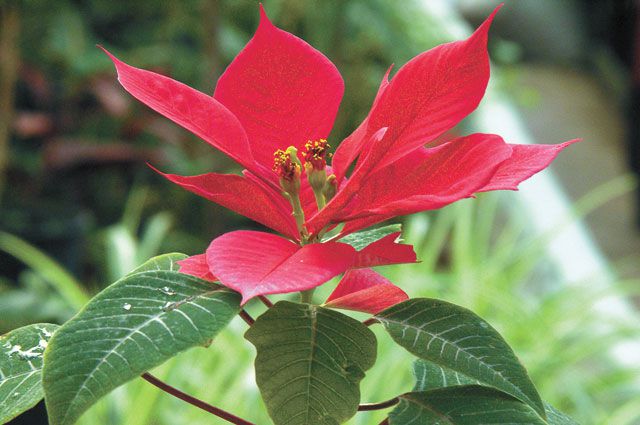
 10 beautiful annuals that bloom all summer
10 beautiful annuals that bloom all summer Sow in the ground, without seedlings: 10 beautiful and unpretentious flowers
Sow in the ground, without seedlings: 10 beautiful and unpretentious flowers Platicodon planting and outdoor care
Platicodon planting and outdoor care Hosta - planting and care in the open ground in the Urals
Hosta - planting and care in the open ground in the Urals